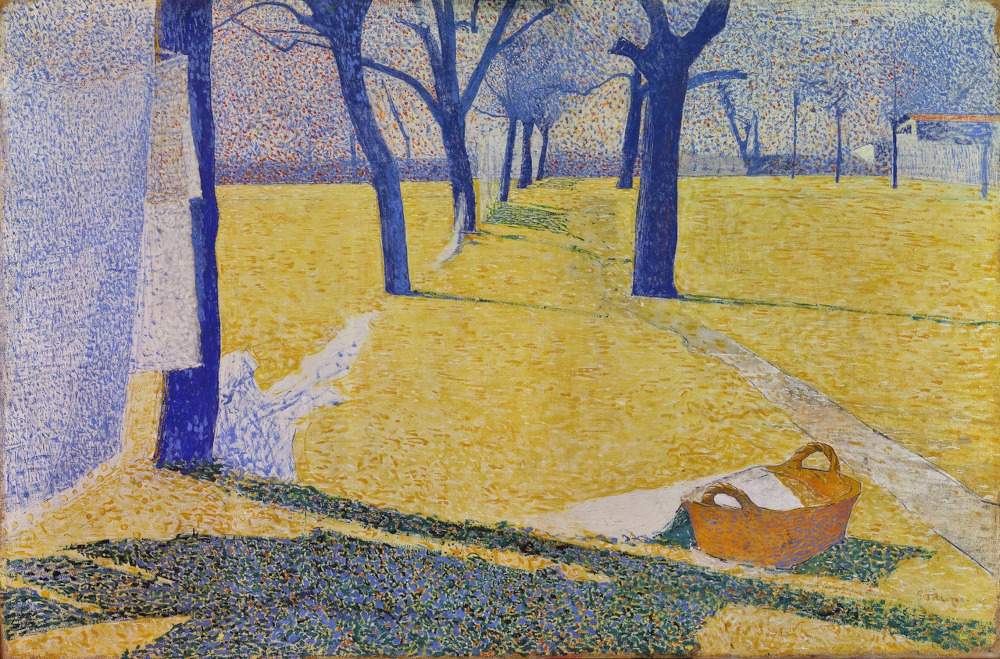In Domodossola an exhibition on light in art between the seventeenth and twentieth centuries, between Titian and Renoir
From July 21, 2023 to January 7, 2024, the “Gian Giacomo Galletti” Civic Museums in Palazzo San Francesco in Domodossola will host the exhibition The Great Theater of Light. Between Titian and Renoir, curated by Antonio D’Amico and Federico Troletti, produced by the City of Domodossola together with the renewed collaboration with the Angela Paola Ruminelli Foundation and the Bagatti Valsecchi Museum in Milan and under the patronage of Regione Piemonte. An exhibition dedicated to light inart between the seventeenth and twentieth centuries. Over the centuries artists, between Italy and Flanders, have immortalized light on canvas: a light that is also a witness to the passage of time and that is investigated in its technological scope, traveling between representations of landscapes and candlelight visions up to the electric light, the luminous artifice that precisely in the Ossola Valley found its consecration as an ideal territory for the construction of hydroelectric power plants.
Titian, Van Dyck, Ippolito Caffi, Gaetano Previati and Renoir are just some of the great artists on display involved in this journey that, thanks also to the valuable collaboration of Enel Green Power, intends to pay homage to the Ossola Valley and its unique hydroelectric potential. Forty-five works will be on display inside the aisles of Palazzo San Francesco in an installation conceived and created by architect and light designer Matteo Fiorini of Studio Lys; an innovative light path that also uses Ossola materials, such as serizzo stone, and that intends to accompany the visitor in a guided “meditation” for the eyes and mind, in a scenic backdrop where light plays the leading role.
The first section will display “candlelight” paintings, genre scenes where the focus is on the rendering of the light source given off by candles or embers. It is a quest that has spanned the centuries, and so it is that the refined canvases of seventeenth-century Flemish artists such as Gherardo delle Notti, Adam de Coster and Trophime Bigot will dialogue with the Peasant Lighting a Candle with a Burning Candlepipe, made by Angelo Inganni in 1850 and coming from the Fondazione Cariplo collection, but also with a Still Life by Giorgio de Chirico that restores a symbolic value of light in the twentieth century.
The heart of the exhibition is thetheatrical artifice of light that is enhanced by artists who are absolute protagonists of the sacred scene between the late 16th and 19th centuries, intensifying the feelings and pathos of the stories being told. Visitors will be able to admire Paolo Piazza’s The Dead Christ Supported by Angels from the Banco BPM collection, Titian’s masterpiece The Deposition of Christ in the Sepulcher from the Pinacoteca Ambrosiana in Milan, and, among others, Caravaggio’s Christ at the Column by Mattia Preti from a private collection. The itinerary continues with the section dedicated to light in nature, particularly in the lake and mountain landscape, where the various phases of the day and the alternation of the seasons are highlighted by admiring works by 19th-century artists such as Ippolito Caffi, Domenico Induno and Angelo Morbelli, and where there are also large canvases dedicated to the Ossola landscape, exhibited for the first time, in which the reflections of the water reproduce the lights typical of the valley. This section is enriched by two masterpieces: Cloths in the Sun, among the most important Divisionist paintings by Pellizza da Volpedo, preserved in a private collection, and The Washerwomen at Cagnes by Pierre - Auguste Renoir.
Continuing on, it will be possible to rediscover the evocative value of light in a group of works from the 19th and 20th centuries: a dramatic light, such as that emanating from The Death of Cleopatra, painted by Achille Glisenti and housed in the Brescia Civic Museums; a light that is a spokesman for emotions visible in the canvases of Gaetano Previati, Giovanni Sottocornola and Giuseppe Mascarini; but also a light with hidden meanings, such as that seen in Relief to a makeshift backhand by Giuseppe Molteni. Light shapes bodies by enhancing their features between carnality and spirituality. Finally, a section of the exhibition is dedicated to the most revolutionary technological achievements in human history, thus also celebrating the history of the Ossola Valley. This area, ideal for the construction of hydroelectric power plants, gave birth to some of the most productive power plants, twentieth-century architecture that comes alive in Enel Green Power’s archival material. Rare backlit photographs, small machinery, and a model made of wooden slats allow visitors to reconstruct the history of these important buildings for Ossola and for the country’s energy production.
The exhibition is made possible thanks to the support of Findomo, Palissandro Marmi - Gruppo Tosco Marmi, Ultravox, Enel Green Power, Domocentro by Spinella & Tamini, Colorificio VR, Mac Impianti, Studio Specialistico ABC, Adi - International Chips.
Hours: Until 8/10/23: Thursday through Sunday, 10 a.m. to 1 p.m. and 3 p.m. to 7 p.m.; 9/10/23: Thursday through Sunday, 10 a.m. to 1 p.m. and 3 p.m. to 6 p.m. Closed Mondays, Tuesdays and Wednesdays.
Image: Giuseppe Pelizza Da Volpedo, Panni al sole (1894-1895; Private collection).
 |
| In Domodossola an exhibition on light in art between the seventeenth and twentieth centuries, between Titian and Renoir |
Warning: the translation into English of the original Italian article was created using automatic tools. We undertake to review all articles, but we do not guarantee the total absence of inaccuracies in the translation due to the program. You can find the original by clicking on the ITA button. If you find any mistake,please contact us.





























